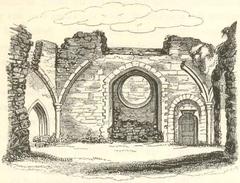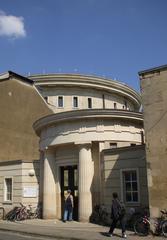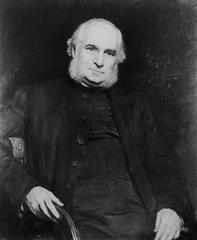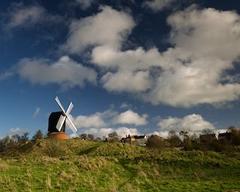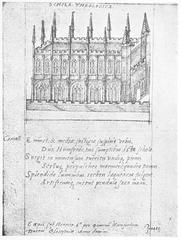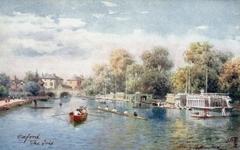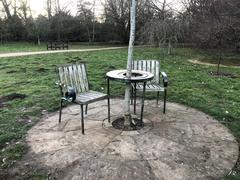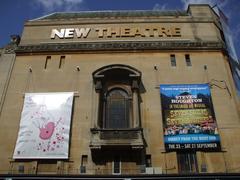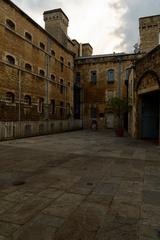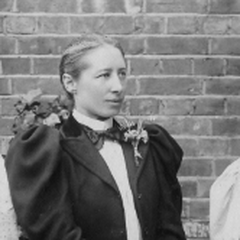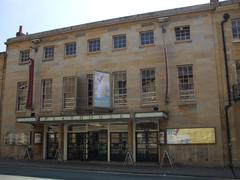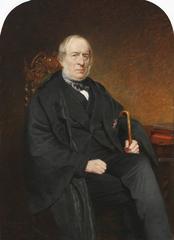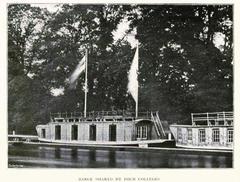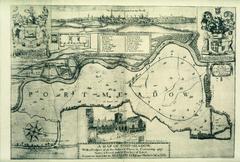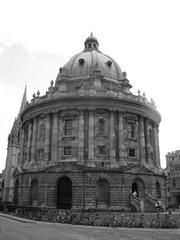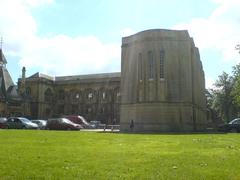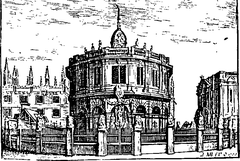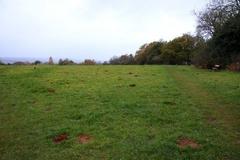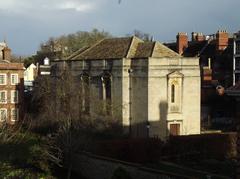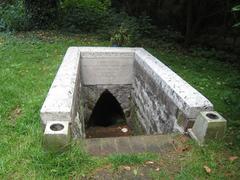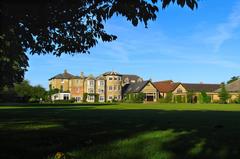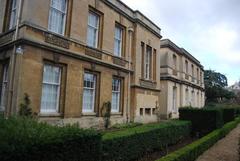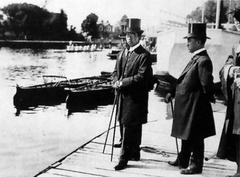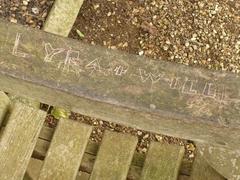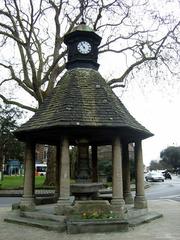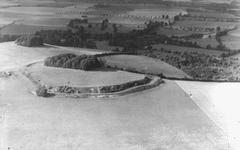Bastion 16 Visiting Hours, Tickets, and Comprehensive Guide to Oxford’s Historical Sites
Date: 14/06/2025
Introduction
Bastion 16, located within the historic heart of Oxford, United Kingdom, is a rare and compelling example of medieval military architecture. As one of twelve surviving bastions from the city’s ancient defensive wall, this Grade I listed monument provides visitors with a direct connection to Oxford’s layered history—from its early defensive strategies to its transformation into a global center of learning. Whether you are an architecture enthusiast, a history buff, or a traveler seeking authentic heritage experiences, Bastion 16 offers a unique and enriching perspective on Oxford’s evolution. This guide delivers current information on visiting hours, tickets, accessibility, and tips for integrating Bastion 16 into your broader Oxford itinerary (Oxford History; PlanetWare).
Contents
- Overview and Historical Significance
- Visiting Bastion 16: Hours, Tickets, and Access
- Architectural Features and Innovations
- Cultural Significance and Preservation
- Nearby Historical Sites and Suggested Itineraries
- Practical Tips for Visitors
- Frequently Asked Questions (FAQ)
- Contact Information and Further Resources
- Sources and Further Reading
Overview and Historical Significance
Bastion 16 in Context
Bastion 16 is a major surviving relic of Oxford’s medieval city wall, located within the grounds of St Edmund Hall. Originally built in the early 13th century atop older Saxon earthworks, it embodies the military ingenuity and urban resilience that have defined Oxford for over 800 years. The bastion played a defensive role during major historical events, such as the English Civil War, and stands today as a testament to the city’s ability to adapt and preserve its heritage (Oxford History; Museum of Oxford).
Origins and Development
- Saxon Foundations: The initial fortifications, dating to around AD 900, consisted of turf banks and timber palisades protecting the settlement at the confluence of the Thames and Cherwell (Wikipedia: History of Oxford).
- Medieval Expansion: Following the Norman Conquest, stone walls replaced earlier defenses, enclosing about 115 acres with a two-mile circumference and at least 21 semi-circular bastions. Bastion 16, completed in the 13th century, enabled defenders to cover adjacent wall sections with crossfire (Oxford History: Listed Bastions).
- Civil War Role: Reinforced during the 17th-century English Civil War, Bastion 16 was integral to Oxford’s defense as the Royalist capital.
Preservation
Today, Bastion 16 is a protected Grade I listed structure, with ongoing conservation ensuring its stability and educational value (Oxford History: Listed Bastions). Modern preservation balances public access and heritage integrity.
Visiting Bastion 16: Hours, Tickets, and Access
Access Points and Location
Bastion 16 is accessible via St Edmund Hall on Queen’s Lane, just off Oxford’s High Street (St Edmund Hall). The site is centrally located, close to major Oxford landmarks, and easily reached on foot from railway and bus stations.
Visiting Hours
- General Opening: Monday to Saturday, 9:00 AM – 5:00 PM (seasonal variations and closures may apply)
- Special Events: Extended hours during heritage open days; always check St Edmund Hall’s website for the latest updates.
Tickets and Admission
- Standard Entry: Included with St Edmund Hall tours; typical fees are £8 for adults and £5 for concessions.
- Free Access: Some university or heritage events may offer complimentary admission.
- Booking: Advance booking is recommended, especially in peak seasons.
Accessibility
- Grounds: Partially accessible, with some uneven surfaces due to historic terrain.
- Assistance: Contact the college in advance for detailed accessibility support.
Facilities
Restrooms are available within St Edmund Hall. Cafés and restaurants are nearby on the High Street.
Architectural Features and Defensive Innovations
Bastion Fortification Principles
Bastion 16 exemplifies the trace italienne (bastion fort) system, characterized by angular projections that enable overlapping fields of fire—a vast improvement over earlier round towers (Nature.com). The geometric layout allows defenders to cover the curtain walls, eliminating blind spots.
Key Features:
- Flanking Fire: Strategic positioning for maximum defensive coverage.
- Low Profile: Reduced visibility and vulnerability to artillery.
- Ditch and Glacis: Protective earthworks to absorb and deflect attacks.
- Casemates and Embrasures: Protected firing positions within the walls.
Materials and Construction
Constructed from local limestone, Bastion 16’s thick walls (often over 2 meters) are reinforced with earth behind the stone facing, providing resilience against siege weaponry (TripXL). Precise geometric calculations ensured structural integrity and defensive effectiveness.
Cultural Significance and Preservation
Symbolic Value
Bastion 16 is more than a military relic—it is a symbol of Oxford’s strategic and cultural legacy. Its integration into the urban landscape reflects the city’s continuous adaptation, from defense to scholarship (Museum of Oxford).
Educational Role
The site serves as an open-air classroom, with guided tours and interpretive panels explaining its architectural and historical importance. It is featured in specialized walking tours and academic programs.
Restoration Efforts
Preservation focuses on stabilizing masonry, managing vegetation, and ensuring safe visitor access, guided by principles of minimal intervention to retain historical authenticity (TripXL).
Community Engagement
Bastion 16 occasionally hosts cultural events, lectures, and historical commemorations, strengthening community ties and public appreciation of Oxford’s heritage (OxfordVisit.com).
Nearby Historical Sites and Suggested Itineraries
Integrating Bastion 16 into Your Oxford Visit
Bastion 16’s central location makes it an ideal stop on a themed walking tour of Oxford’s medieval heritage. Recommended routes begin at Radcliffe Square, pass through Queen’s Lane to St Edmund Hall, and continue to New College and its own sections of the city wall (PlanetWare; Anywhere We Roam).
Major Nearby Attractions
- New College: Additional sections of the city wall and atmospheric gardens.
- University Church of St Mary the Virgin: Panoramic city views from the tower.
- Radcliffe Camera: Iconic library building.
- Oxford Castle & Prison: Guided tours of a Norman castle and prison.
- The Covered Market: Historic market for food and crafts.
- Christ Church Meadow: Scenic walking paths with further wall remnants.
Sample Half-Day Itinerary
- Morning: Radcliffe Square and University Church of St Mary the Virgin
- Late Morning: Bastion 16 and St Edmund Hall
- Lunch: Covered Market
- Afternoon: New College and Ashmolean Museum
- Evening: Cultural event at Holywell Music Room or Modern Art Oxford
Practical Tips for Visitors
- Plan Ahead: Confirm visiting hours and ticket policies on St Edmund Hall’s website.
- Photography: Permitted for personal use; check for restrictions during special events.
- Accessibility: Some uneven surfaces—contact the college for details.
- Weather: June weather is variable; bring a light rain jacket (Weather25).
- Duration: Allow 20–30 minutes for Bastion 16; more if combining with other sites.
- Combine with Events: Pair your visit with Oxford’s cultural calendar (Eventbrite Oxford).
Frequently Asked Questions (FAQ)
Q: What are Bastion 16’s visiting hours?
A: Generally, Monday to Saturday, 9:00 AM – 5:00 PM, but always check St Edmund Hall’s website for up-to-date details.
Q: Is there an admission fee?
A: Entry to Bastion 16 is typically included with St Edmund Hall tours (£8 adults, £5 concessions). Special events may be free.
Q: Is Bastion 16 wheelchair accessible?
A: The grounds are partially accessible; contact the college for specific guidance.
Q: Are guided tours available?
A: Yes, via St Edmund Hall and local heritage organizations (Museum of Oxford).
Q: Can I take photographs?
A: Photography for personal use is permitted; commercial use requires permission.
Q: What are the best nearby attractions?
A: New College, Radcliffe Camera, University Church of St Mary the Virgin, Covered Market, and Ashmolean Museum.
Contact Information and Further Resources
- Website: St Edmund Hall
- Phone: +44 (0)1865 279000
- Address: St Edmund Hall, Queen’s Lane, Oxford, OX1 4AR, United Kingdom
For New College’s city wall sections:
- Website: New College Oxford
- Phone: +44 (0)1865 279500
- Address: New College, Holywell Street, Oxford, OX1 3BN, United Kingdom
Visuals and Media Recommendations
- Feature high-quality images of Bastion 16 and the surrounding gardens with descriptive alt text.
- Include maps showing Bastion 16’s location and suggested walking routes.
- Link to virtual tours on St Edmund Hall or Oxford tourism sites for enhanced engagement.
Summary and Visitor Recommendations
Bastion 16 stands as a remarkable testament to Oxford’s medieval defenses and ongoing commitment to heritage preservation. With accessible guided tours, interpretive resources, and proximity to other major sites, it is an essential stop for any visitor seeking to understand the city’s historical depth. Effective planning—using up-to-date visitor information and integrating Bastion 16 with other attractions—will maximize your experience. Enhance your visit with the Audiala app for audio guides and follow local organizations on social media for the latest updates (Oxford History; OxfordVisit.com).
Embark on your journey to Bastion 16 and immerse yourself in the heritage of one of England’s most iconic cities.
Sources and Further Reading
- History of Oxford, 2024, Wikipedia
- Oxford History: City Wall, 2024, Oxford History
- Oxford History: Listed Bastions, 2024, Oxford History
- Bastion Forts in the World, 2025, TripXL
- Bastion Fortification Principles, 2025, Nature.com
- Museum of Oxford Tours, 2025, Museum of Oxford
- OxfordVisit.com Historical Places, 2025, OxfordVisit
- PlanetWare Oxford Attractions, 2025, PlanetWare
- St Edmund Hall Visiting Information, 2025, St Edmund Hall
- UK Travel Planning: Oxford Travel Guide, 2025, UK Travel Planning
- Eventbrite Oxford Events, 2025, Eventbrite



